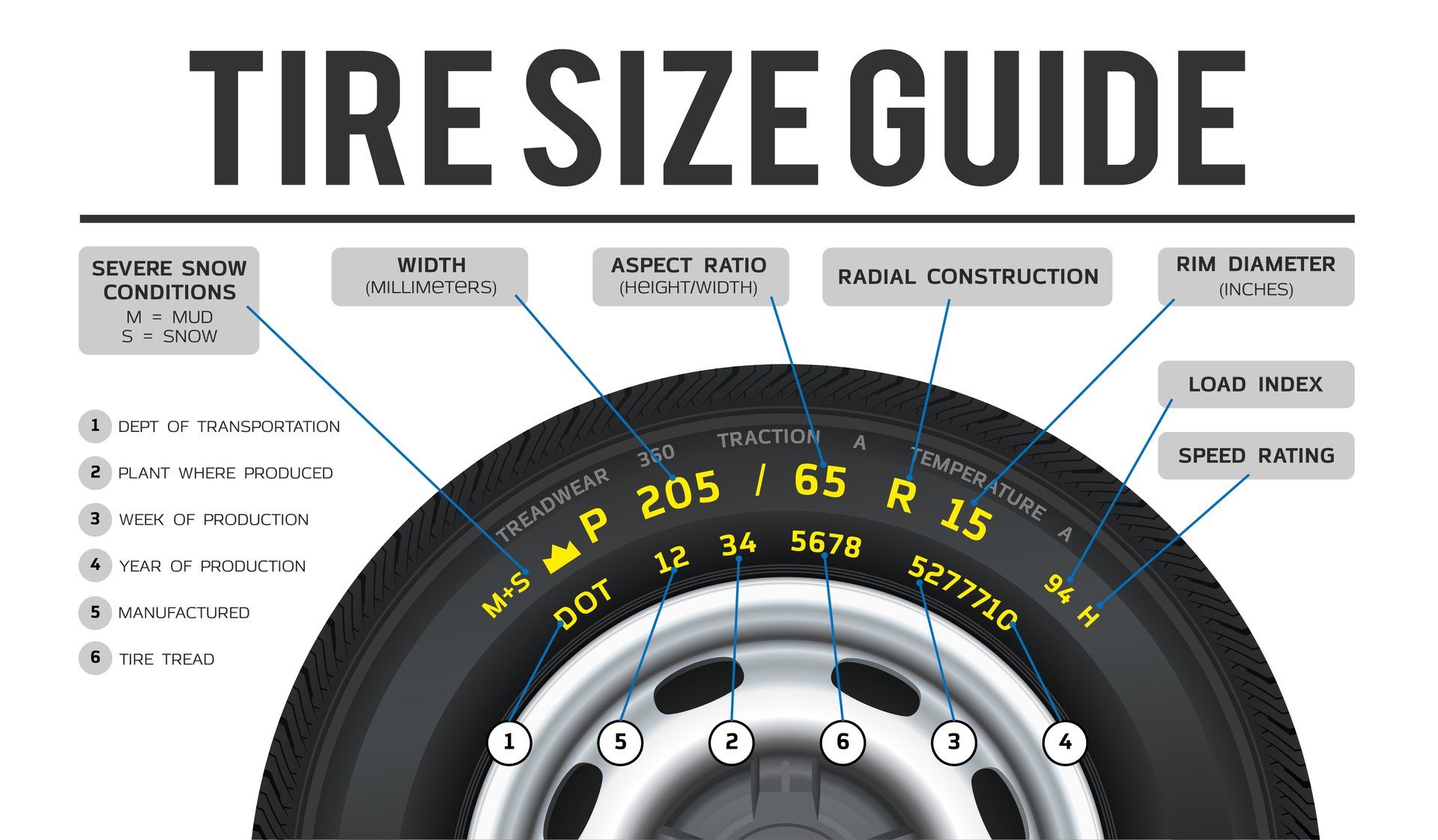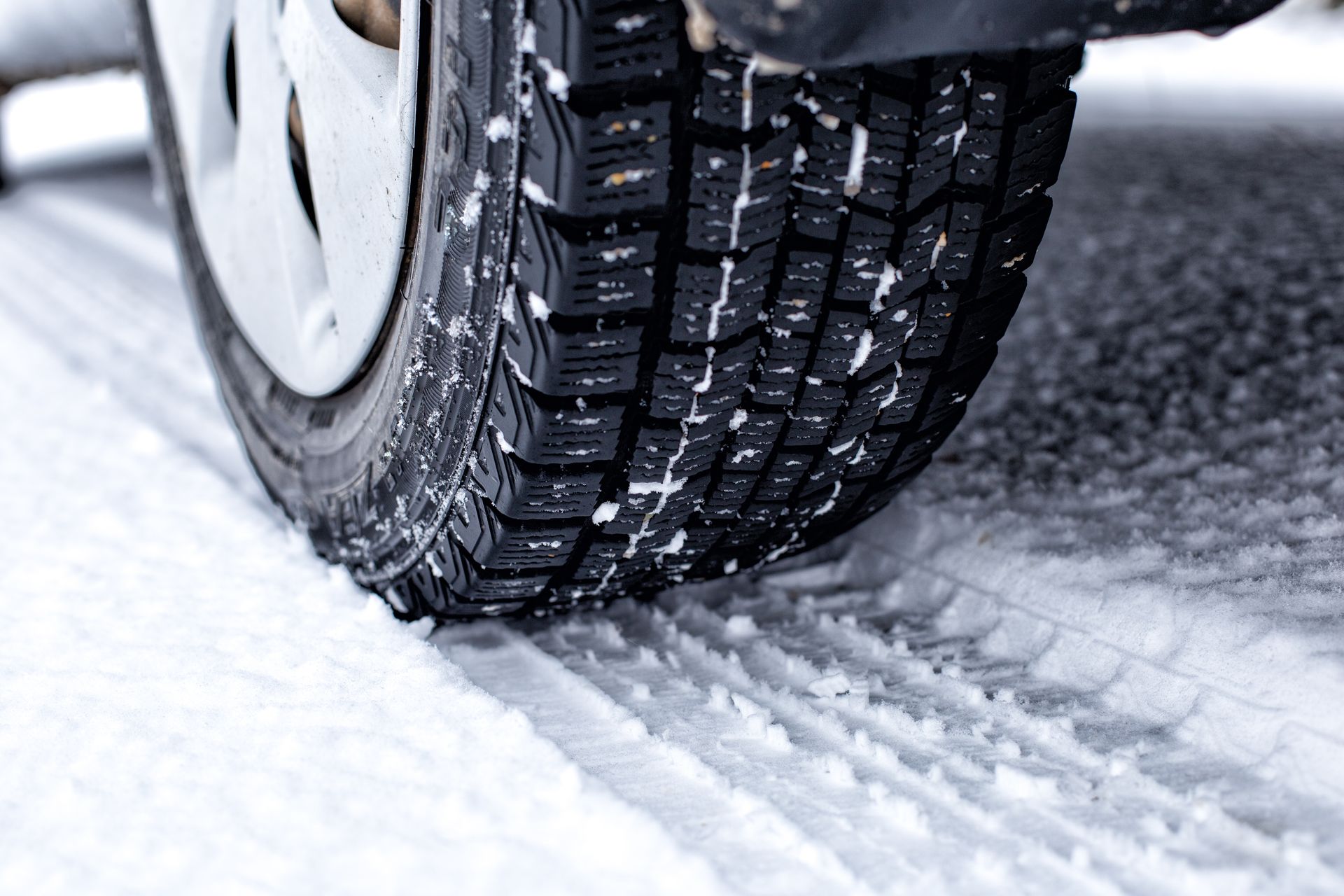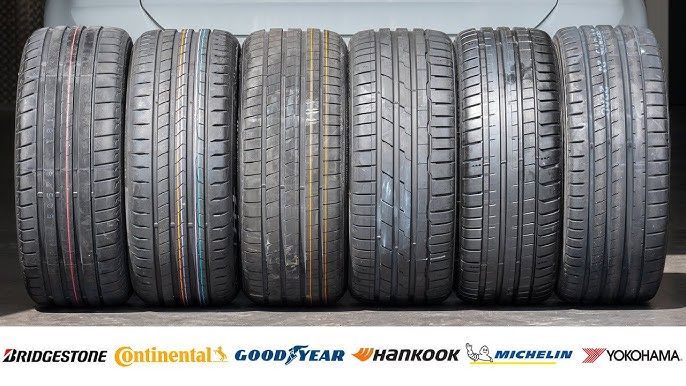How to Read Tire Sidewall Markings Like a Pro
This is a subtitle for your new post

Why Tire Sidewall Markings Matter
If you’ve ever taken a close look at your tires, you’ve probably noticed a long string of numbers and letters on the sidewall. These markings are more than just a random assortment – they provide critical information about your tire’s size, performance, and capabilities.
Understanding these sidewall codes can help you make informed tire purchases, maintain your vehicle properly, and ensure you’re choosing the right tire for your driving style.
Breaking Down the Tire Sidewall Code
Most passenger vehicle tires will have a sidewall code that looks something like this:
P205/65R15 94H
Let’s break down what each section means:
- P (Tire Type) – This letter indicates the type of tire. In this case, P stands for "P-Metric," which means it’s designed for passenger vehicles. Other common types include LT (Light Truck) and ST (Special Trailer). If there is no letter, it’s a European Metric tire.
- 205 (Tire Width) – This number is the width of the tire in millimeters, measured from sidewall to sidewall. In this case, the tire is 225mm wide.
- 65 (Aspect Ratio) – This number is the tire’s height as a percentage of its width. Here, the sidewall height is 60% of the tire’s width.
- R (Construction Type) – The R stands for Radial, which means the tire’s internal construction features layers of fabric running radially across the tire. Nearly all modern passenger tires are radial.
- 15 (Wheel Diameter) – This number is the diameter of the wheel (or rim) the tire is designed to fit, measured in inches. This tire fits a 16-inch wheel.
- 94 (Load Index) – This two- or three-digit number represents the maximum load the tire can support when properly inflated. You can find load index charts online to determine the exact weight capacity.
- H (Speed Rating) – The final letter indicates the maximum speed the tire can handle. In this case,
H means the tire is rated for up to 130 mph. Different letters correspond to different speed limits.
Additional Tire Markings to Know
Aside from the main size code, you’ll also find other important information on the sidewall, including:
- DOT Code: Indicates that the tire meets Department of Transportation safety standards. It also includes a four-digit code representing the week and year of manufacture (e.g., 2623 means the tire was made in the 26th week of 2023).
- Treadwear, Traction, and Temperature Grades: Part of the Uniform Tire Quality Grading (UTQG) system, these numbers provide insight into the tire’s durability, traction, and heat resistance.
- Max Load and Max Pressure: Indicates the maximum weight the tire can support and the maximum air pressure it can handle.
Why This Information Matters
Understanding these markings can help you:
- Choose the right replacement tires for your vehicle
- Match tires for even wear and optimal performance
- Ensure your tires are rated for your typical driving speeds
- Avoid overloading your vehicle, which can lead to blowouts
Shop for the Right Tires at Boss Tire
At Boss Tire, we make it easy to find the right tires for your vehicle. Use our online tire search tool to filter by size, speed rating, load index, and more. If you have questions about which tire is right for you, our tire experts are always here to help.















